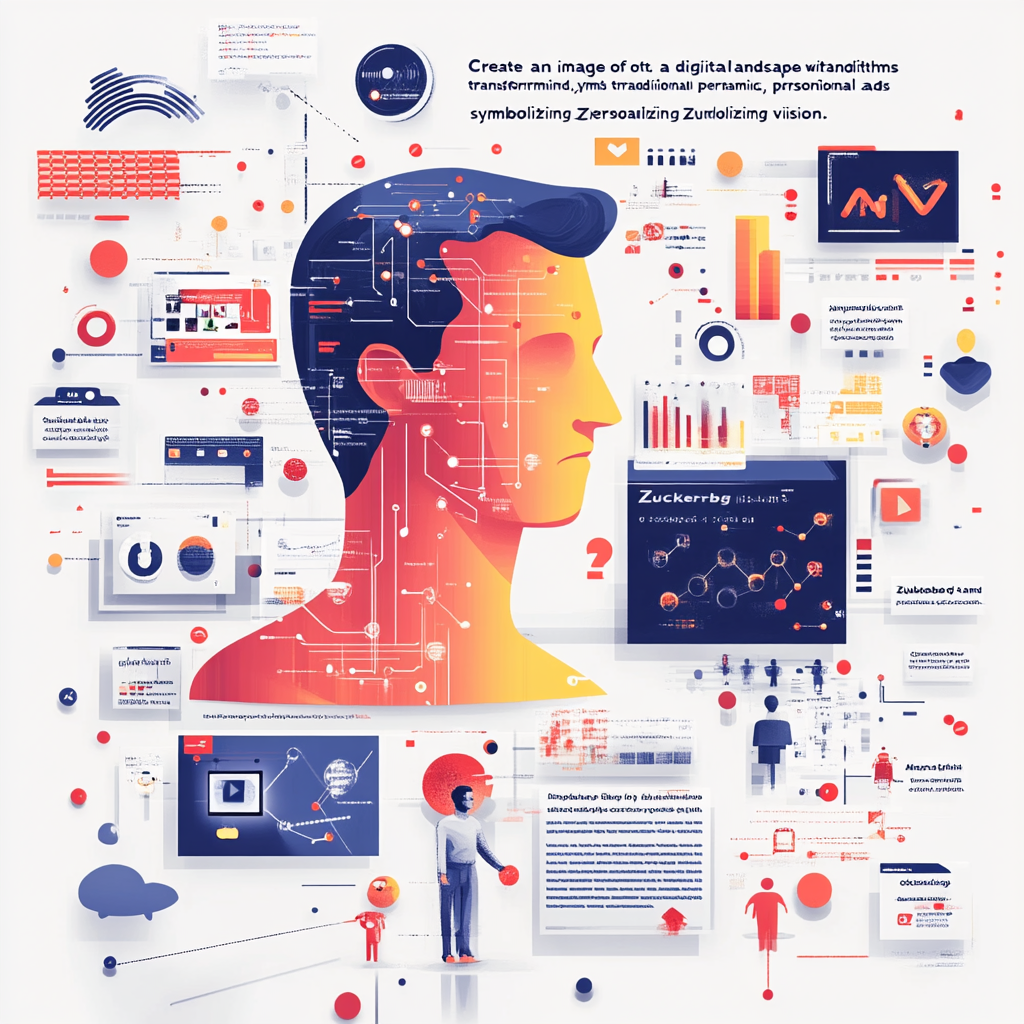
Zuckerberg’s AI Vision: Transforming Performance Advertising – AdNews
Zuckerberg’s AI Gambit: Advertising’s “Autopilot” Future and Why Creative Agencies Should Sweat
Step aside, traditionalists. Mark Zuckerberg isn't merely dabbling in a tech playground. No, he’s engineering a full-blown self-driving car for advertising, and if you’re an ad professional, it’s time to tighten your chin strap. Forget everything you thought you knew about "performance marketing." Meta's ambitious AI agenda is on track to render your human decision-making process as outdated as a flip phone. Buckle up, because this isn't just another dose of Silicon Valley hype—it's a seismic shift that could have career-altering implications.
The Death of Middlemen (and Midnight Brainstorms)
If you think this is just another tech buzzword bonanza, take a moment to digest these figures from Meta’s Q1 2025 earnings: $41.39 billion in ad revenue, a 16% year-over-year increase, and a mind-blowing 46% better conversion rates, courtesy of their AI-driven "Incremental Attribution" systems. This isn't just an improvement—it's an explosion that's sent shockwaves through the traditional creative process. When Zuckerberg says, “Define objectives and budgets, then let the machines handle the rest,” it’s not merely a suggestion; it’s a harbinger of a new era[2][3].
How the Magic Works (and Why It Terrifies Agencies)
So how does this impressive sorcery work, you may ask? Let’s break it down:
-
Creative Generation: Picture this: AI whips up thousands of ad variants in a heartbeat, all tested against user behaviors that slip under our conscious radar[3]. It’s as if your creative team’s brainstorming sessions have been jet-fueled with computational firepower.
-
Hyper-Targeting: Machines are in the driver’s seat, identifying micro-audiences so granular that today's “persona development” feels like child-scribbling on the wall[1]. Want to reach a subset of eco-conscious dog owners who prefer vegan kibble? The AI’s got you covered.
-
Self-Optimization: Campaigns evolve in real-time, almost like a teenage coder pulling all-nighters before a deadline—no human intervention needed. It’s marketing’s equivalent of the liquid metal robot in Terminator 2, seamlessly adapting to ensure success[2].
The math is simple, and it’s brutal: Why shell out $250 an hour for a creative agency’s concepts when AI can produce better-performing ads before your art director even wakes up? Brands that have employed Meta’s AI systems have already seen conversion efficiencies increase by nearly 50% compared to traditional strategies. The numbers are too seductive for those on a budget to overlook.
The New Advertising Economy: Fewer Briefs, More Bots
Zuckerberg’s vision is crystal clear: ramp up advertising's share of global GDP while obliterating the friction that creeps in through traditional methods[2]. This isn’t purely about rendering human roles obsolete; it’s about making their involvement mathematically suboptimal. The evidence is irrefutable: as advertising increasingly automates, average ad prices have risen by 10%, showing that AI can not only deliver superior performance but can also charge a premium for the privilege[2].
Survival Strategies for Legacy Players
Now, before the coffee-stained resumes start flying into recycling bins, let’s not hit the panic button—yet. There are ways for existing agencies to adapt and even thrive:
-
Pivot to Strategic Consulting: Get out of the creative stone age and become the interpreters of AI outputs. Help clients make sense of the data-laden terrain instead of just crafting its aesthetic.
-
Embrace Hybrid Models: Use AI as collaborative tools that enhance human creativity rather than replacing it. There will always be room for human nuance, no matter how sophisticated the AI gets.
-
Specialize in Uniquely Human Skills: Engage in emotional storytelling or craft brand voice development that machines just can’t replicate. Ethical oversight will also become increasingly essential as automation takes over decision-making.
But let’s not mince words—the clock is ticking. With nearly a billion users already engaging with Meta AI across various platforms[2], the groundwork for full automation is laid thick. Agencies that cling to traditional methods risk becoming the Blockbuster Video of marketing services; irrelevant relics of a bygone era.
The Philosophical Paradox: Better Results, Fewer Jobs
Here’s where it gets sticky: while Meta’s systems churn out objectively superior advertising outcomes, they also strike at the heart of the industry’s creative soul. As AI takes over targeting, creative, and optimization processes, we’re left grappling with a profound question: What do we, as humans, bring to the table anymore? Machines do the legwork better and faster—so where do we fit in this brave new world?
Zuckerberg’s wager is that advertising’s future will belong to the algorithmically savvy, those who can decipher data points instead of just color palettes. For better or worse, the evidence seems to support him[2][3]. The big question on everyone’s lips is: On which side of this accelerating algorithm revolution will you find yourself when it all shakes out?
Want to stay up to date with the latest news on neural networks and automation? Subscribe to our Telegram channel: @ethicadvizor
Remember: adapting to change isn’t just about survival; it’s about thriving in the new landscape where creativity and technology collide. This isn’t just the future of advertising; it’s the future of work. And those who ignore it risk being left behind—unceremoniously and without warning.
Appendix: Why This Matters Beyond Advertising
Before we close the curtain, let’s take a step back and appreciate the broader implications of Meta’s approach. Their playbook provides a blueprint for AI disruption that signals what’s coming for various knowledge industries:
- Quantify Creative Processes: Move away from abstract creativity metrics and focus on measurable outcomes (think conversion rates transforming into creative effectiveness).
- Optimize for Hard Metrics: Create systems that prioritize cold, hard data over subjective human opinions.
- Financial Results as Drivers: Let the numbers speak for themselves, compelling industries to adopt AI despite initial resistance.
In essence, the advertising world is merely a canary in the coal mine. The repercussions of AI’s swift ascendance will echo through sectors like law, finance, and even the arts. The takeaway? Your sustainability lies in becoming indispensable to these machines rather than standing in their way. The shift is not just happening in the advertising realm—it’s poised to redefine how we engage with technology and creativity across the board.
So, are you ready to join the conversation? The future waits for no one, and the revolution is already underway.

